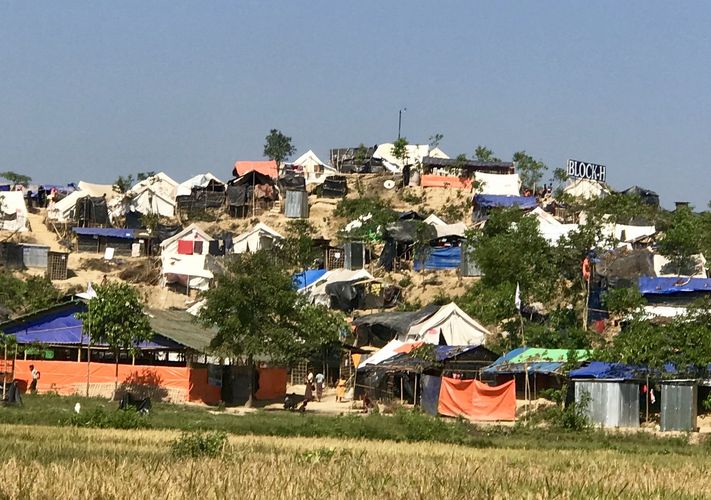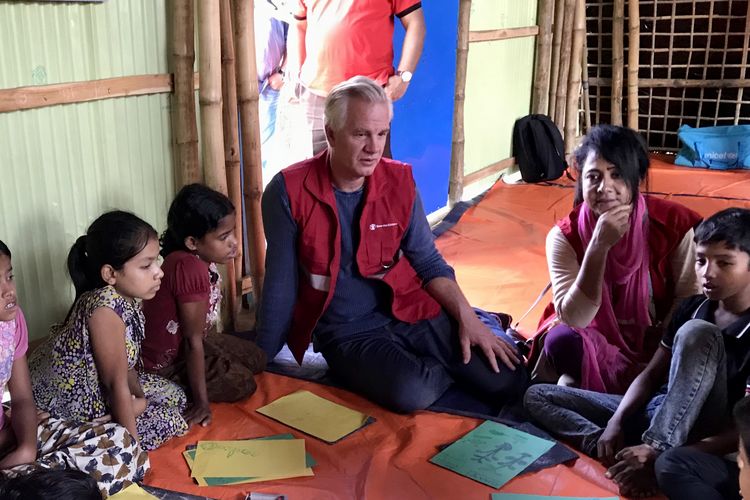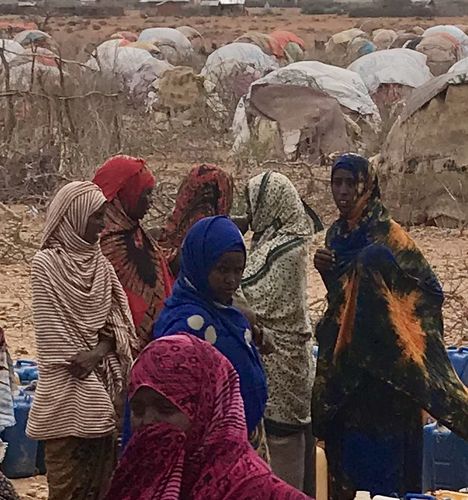It is difficult to imagine that the already heartbreaking predicament of two peoples, the Ethiopians and the Rohingya, could get even worse. Yet the current weather is delivering more hardship to both.
In the case of the Ethiopians, after three years of drought, experts predicted another tragically dry “rainy season”. Instead, the rainy season started off erratically and then, suddenly, a deadly tropical storm from the Gulf of Aden hit the Horn of Africa, bizarrely turning drought into floods. Over 700,000 people across the Somali and Ethiopian highlands were hit by torrential rain. This in turn, caused flash floods in southern Ethiopia, where millions had been receiving humanitarian assistance.
Some 3,500 miles away in Bangladesh, nearly 700,000 people, the Rohingya, who just last year fled what the United Nations human rights chief called suspected “acts of genocide” in Myanmar, have ended up in a camp in the centre of a monsoon strike zone. This year’s monsoon season, which has already begun, is expected to hit the Rohingya hard.
Both stories need to be told, not just because of the magnitude of their plight and the Shakespearean collision of weather and conflict, but also because the world, for all its technology, wealth and creativity, continues to struggle to protect vulnerable people from increasing climatic disasters.
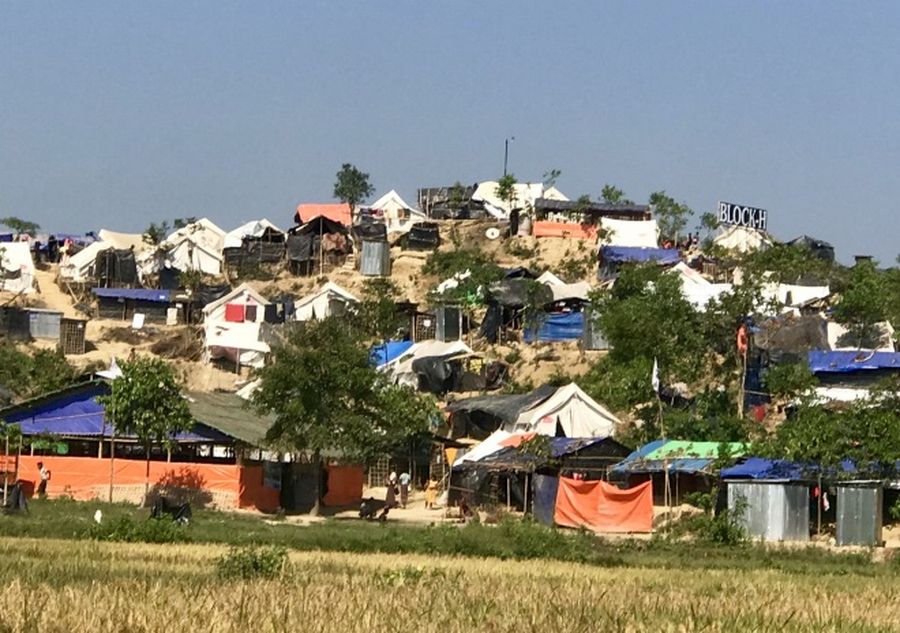
Let us begin with the Rohingya, one of the most persecuted people on the planet. The pure scale and speed at which the Rohingya men, women and children left their homes in Myanmar over the course of the past year make this the fastest and largest forced migration since the Rwanda crisis in 1994.
In Save the Children facilities within the Rohingya camp, the stories told by the Rohingya are almost unimaginable. Rohingya describe how the Myanmar military raped and dismembered women while their husbands and fathers were forced to watch and then summarily shot.
Many Rohingya adults were burnt alive and their homes razed to the ground while children stood paralysed watching. Some 300,000 children have witnessed atrocities that will scar them for life. Nine months on, some women who were assaulted are now giving birth to babies. So how then could things get any worse?
While Bangladesh’s government generously provided a 3,000-acre mega-camp in the south-eastern part of the country for the Rohingya, the camp is tragically located in the historical path of monsoons. In 1970, for example, a monsoon killed half a million people in this area.
Given the terrain and space constraints of the refugee zone, the Rohingya had little choice but to build their shelters on steep hills, with mud steps to get up and down. As the Rohingya cleared the bamboo hillsides to create more room for shelters, and as children were dispatched daily to gather wood for cooking, the deforestation has compounded their fate. Despite the rush to prepare by all those involved, mudslides and flooding are expected to leave over 100,000 people without shelter.
As if that weren’t enough, the rains will significantly increase the risk of cholera. As no one anticipated the pace and number of the waves of refugees between September and November last year, the early latrines were inadequate and too small for sustained and scaled use. Many of the latrines have been placed uphill. A large part of the existing water supply is contaminated. And when cholera comes, its most deadly impact will be on the children.
Because children arriving at the camp are most often malnourished – a UN investigator has said the Myanmar government appears to be pursuing a policy of starvation in Rakhine state to force out the remaining Rohingya population – many have weakened immune systems, making them three times more likely to die of cholera than a healthy child.
In dry weather, the logistical strain on the distribution system into the Rohingya mega-camp is already considerable and the ability of the relief organisations to provide sustainable food, basic supplies, shelter, healthcare and support is extraordinarily challenging. Floods will make these challenges exponentially worse. For example, aid organisations need to, in some cases, temporarily dismantle health clinics or child-friendly spaces to keep people safe from structures that might wash away during heavy rains.
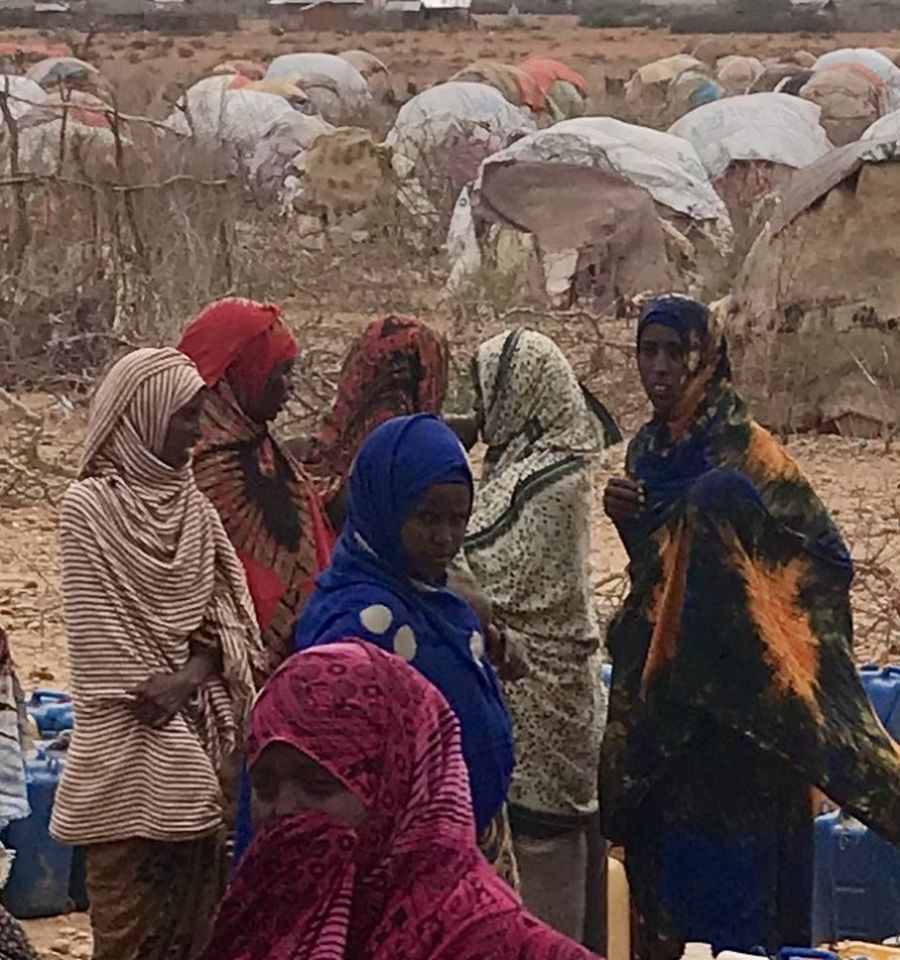
Let us switch now to the tale of the Ethiopians, where the recurrent drought-driven humanitarian crisis is now in its fourth year. Thanks also to the country’s ongoing political conflict, the number of suffering children and internally displaced people continues to grow.
South-eastern Ethiopia, specifically the Oromia and Somali regions, has been the hardest hit, as much of the conflict has been between the two regions and this is also where drought has devastated the livestock-dependent pastoral population.
Tragically, the storms in the highlands have resulted in rivers bursting their banks in the lowlands. Floods have hit the very same people who had suffered most from drought. This is on top of what was already a dire outlook: according to the pre-storm “Ethiopia Humanitarian and Disaster Resilience Plan,” 7.9m Ethiopians were expected to need food/cash assistance, and 8.5m Ethiopians were expected to need non-food humanitarian support.
In a country with an extraordinarily diverse population, conflict has compounded their crisis. The conflict, primarily in the Somali-Oromia border region, has driven over 1m men, women and children into the IDP camps. Now, with the recent election of Ethiopian prime minister Abiy Ahmed, originally from the Oromia region, there is optimism that the conflict situation will improve. The challenges for Ahmed in reducing conflict, developing solutions for the IDP and coping with the weather at the same time are tremendous.
Rain is certainly better than no rain, and the storms have already reduced the burden on aid workers to deliver daily water to 1.5m Ethiopians. Yet the weather complexities are extraordinary, as aid workers have had to respond to tropical cyclone Sagar in Somalia and the highlands of Ethiopia while at the same time continuing to deal with the ongoing pastoral crisis in the South.
It is critical to understand that those Ethiopian pastoral communities depend on livestock that has been largely wiped out in recent years. As one walks through the IDP camps, family after family explain how they lost all their livestock. Rebuilding will take time. While it takes nine months for sheep and goats to breed and a year for cattle, most of the pastoral communities don’t have livestock left to breed. Experts estimate that it could take four to seven years for the herdsmen to rebuild their stocks – assuming those years are uninterrupted by further climatic shocks, an unlikely proposition.
Without livestock, the south-eastern population of Ethiopia will struggle to feed themselves, and many face a potentially fatal blow to their historical nomadic way of life and livelihood. Given that 90% of Somalis are either pastoral or agro-pastoral, the current crisis represents a herculean challenge for a country with a US$2,100 per capita income. Before the current flash floods, which will inevitably cut both ways, 3.4m households were estimated to need agricultural and livestock support this year.
As a consequence, an estimated 3.5m children under the age of five and pregnant/breastfeeding women are suffering from moderately acute malnourishment. Worse still, the humanitarian teams estimate that around 350,000 children under the age of five will suffer from severe acute malnutrition, a heartbreaking number.
In the healthcare facilities run by Save the Children, the first thing the doctors explain is that SAM is rarely the only condition. SAM cripples the immune system, so the children usually have a variety of other complications, the most prevalent of which is pneumonia. The pain of seeing these children so sick is the kind of pain you take home with you and it doesn’t go away.
Over 400,000 displaced school age children are living in temporary shelters, and 125,000 of those have no access to education. The Save the Children schools in the IDP camps are a ray of hope. Despite the camp conditions, the heat, and the limited rations, the children laugh, smile, learn and play in a safe place.
Sadly, they have little by way of learning material. The teachers explain the maths of their choices: re-routing subsistence humanitarian funds to school supplies isn’t a choice they can make right now.
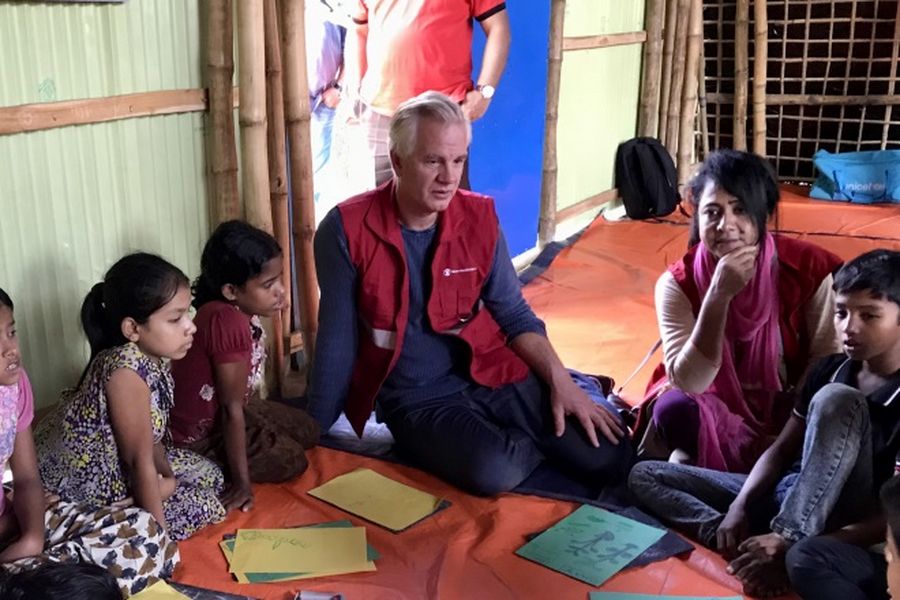
When the children are asked about their future dreams, they are in total agreement: they each want to be either a teacher or a doctor. As I express surprise at the consensus, the Save the Children team explains that thus far those two professions are the ones that have brought meaning to the life of these children. They admire what they know.
Talk of returning to their parents’ pastoral heritage provokes an outcry of protest in the classroom. The children’s “no” is resolute. And their parents don’t disagree. Most simply waited in the bush for rain as they watched their goats and cattle die a slow death; after three-plus consecutive years of drought, they told us clearly and repeatedly that they don’t want to go back to a purely pastoral life, even if it rains. One woman, who brought us into her home to tell us her story, pleaded with us to give her an education and an alternative to their previous way of life. Humanitarians call this a plea for “livelihood”.
Aid workers in both Ethiopia and Bangladesh will fight everyday to save lives as the weather scenarios unfold and the tragedies of these people develop. The world will have to come to grips with how to respond to the immediacy of these crises; the financial price tag will continue to be as large as the human toll. The efforts to raise funds for these two tragedies must succeed, which requires crowding their issues on to the desks of the world’s financial and political leadership.
At the same time, we can’t just let the movie play out again and again without changing the ending. We must deal with the elephant in the room: how do we peaceably and voluntarily move such staggeringly large numbers of suffering people out of the conflict and weather zones that continue to threaten their lives? How can they be better protected from the increasingly devastating toll that weather in this region will inevitably take year in and year out?
The humanitarian community fights to save lives on the ground, and global leaders struggle yet again to fund this year’s crisis. We must come up with an alternative that promises these two peoples a real chance of a livelihood and hope of a better future.
Jay Collins is vice chairman of corporate and investment banking at Citigroup and has recently returned from visits to the Rohingya camp in Cox’s Bazar, Bangladesh and IDP camps in Gode, Ethiopia. Both trips were with Save the Children.
IFR has supported Save the Children for 23 years, raising £26.6m in that period. IFR has run a tombstone auction in aid of Save the Children at the IFR Awards in London since 1995 where banks and issuers bid for position on a virtual deal tombstone.
In January 2018, the auction raised £1.01m with another £45,990 in personal donations from attendees at IFR, IFR Asia and PFI dinners.
